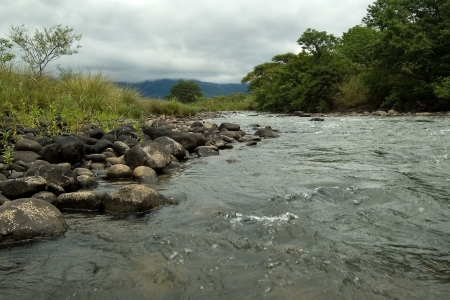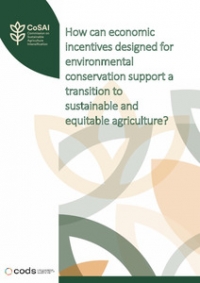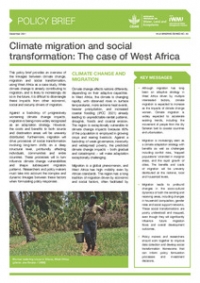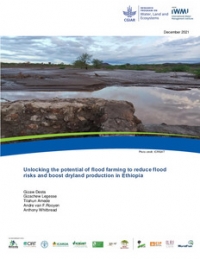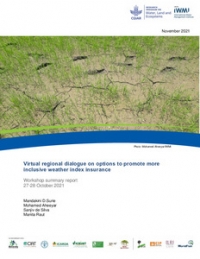This post is part of the Agriculture and Ecosystems Blog’s month-long series on Resilience.
Managing a landscape begins much like a dance – you learn the basic steps, survey the arena and evaluate areas where people could work together for the best performance. Then you identify potential partners, because working together is really the best way to learn the steps.
 Just as in dancing, each partner in your landscape has strengths and weaknesses. Photo: Alexander Zabara
Just as in dancing, each partner in your landscape has strengths and weaknesses. Photo: Alexander ZabaraSome partners already manage the game well, they may even have skills and steps that you are hoping to learn. But just as in dancing, each partner in your landscape has strengths and weaknesses. Will power dynamics get in the way, freeing some partners to express themselves while restricting others?
Balancing institutional support and adaptation
In integrated landscape management there are far more than two partners, and it is an ongoing challenge to balance different objectives and coordinate interests into one coherent set of activities. An ‘integrated’ landscape is one that tries to synergize different objectives, such as agricultural productivity, conservation, and livelihood improvement for local communities. Some stakeholders’ interests are plainly laid out on the table, while others are concealed throughout. Power dynamics are often complex.
While the intention is to foster participation, democratic decision-making can be elusive. Some actors may not join because they feel their opinions will not be truly taken into consideration, while others will join because they feel it gives them a strategic advantage, and perhaps even the ability to dominate.
In the long-term, in order to achieve a truly integrated landscape, what you want is a balance of institutional support and opportunities for flexibility and adaptation. But the word ‘institution’ doesn’t always inspire confidence. Many people think of an institution as being rigid and inflexible. Is it possible for institutions to provide enough structure to support actors and their actions, while granting the flexibility to respond to sudden changes and new challenges? What skills and techniques are needed to build resilience into a system and at what scales?
An exemplar solution: the International Model Forest Network
One example is the International Model Forest Network, which is aiming to do just that. The network builds strong teams of leaders who guide each Model Forest landscape with a set of principles rather than a strict program of activities such as a focus on large landscapes, a commitment to sustainability, participatory governance, knowledge sharing, capacity building, and networking.
Each Model Forest fits the unique context of its country and landscape, while drawing from the management style and expertise of the international network.
Model Forest Araucarias del Alto Malleco, for instance, is supported by Chile’s National Forest Company (CONAF), but is directed by a body of local stakeholder groups who are committed to reducing conflicts between land users and improving opportunities for conservation and climate change adaptation.
The area covers some of the last remaining original forests of the monkey puzzle tree (Araucaria araucana), as well as the headwaters of two of the most important rivers in Chile, the Bío Bío and the Cautín. Previous plans to develop the region focused on expanding timber plantations and introducing hydroelectric plants, often without consulting the residents of the landscape – a mix of the Mapuche-pehuenche people and colonos (campesinos of European heritage).
In some ways, this lack of consultation built a system that is resilient to change. But luckily for Chile, the period of intense extractive activities dwindled in the 1990s, right around the same time the international community began encouraging countries to protect biodiversity and natural resources.
For more than a decade now, the Model Forest has been joining efforts to preserve the Araucaria and Lenga forests while creating opportunities that local communities agree on to strengthen their economies and livelihoods. This back and forth movement allows stakeholders to continuously adapt to changing needs and circumstances, while building trust and forming tight bonds that will help overcome times of crisis.
A collaboration of movements
The example also shows the importance of different scales in creating an enabling environment, e.g., the policies, regulations and markets needed to support integrated management. Efforts and leadership at the community level often drive the heart of the initiative, but engagement at the district and government levels can help bring those efforts to fruition. They can also link up smaller initiatives to the bigger picture, leading to greater overall impact.
Understanding the appropriate temporal scale for integrated management is also a challenge. Policies and programs with long-term financial, technical and social support can improve longevity. Local leadership needs have a broad base (not just one person) and capacity needs to be strengthened to ensure continuity and effectiveness.
The Model Forest leaders in Araucarias del Alto Malleco aim to do this through training, creating platforms for democratic decision-making, and networking leaders with leaders in other landscapes. In other initiatives, linking ministries and coordinating the management of different sectors has also worked. Both are important, and when done well, a space can be provided for diversity and flexibility while maintaining structure and support.
The best dancers have great skill and technique, but they are also intimately familiar with the rhythm and steps of the dance, freeing them to improvise and adapt. Whether the dance has formal leaders and followers, or everyone is dancing together, the dancers have to be attuned to the movements of others. What matters most is not the movements of any individual, but the artistry that emerges from the collaboration of different movements. That is what makes it challenging, but also what makes it incredibly beautiful.
The above example was identified through the authors’ postgraduate research and the Latin component of the Global Review on Integrated Landscape Initiatives, as part of the Landscapes for People, Food and Nature Initiative.







